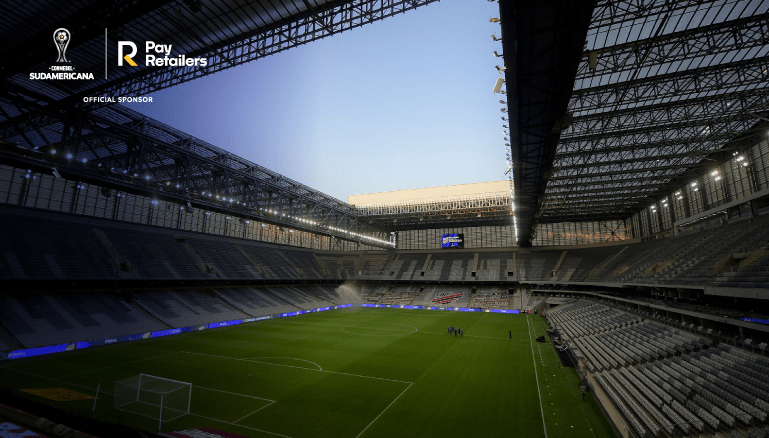The stadium and its history
The “Maracaná” as it’s called by the locals is probably the most famous stadium in all of South America and well-known in the world. It is located in Rio de Janeiro, Brazil, and has a capacity of 79,000 fans, which is about a third more than the second-largest CONMEBOL -stadium which is located in Uruguay.
Although the stadium is monumental in its own right, it is part of the “Complexo Esportivo do Maracanã”. This sport complex additionally houses the Maracanãzinho, a multi-purpose hall for sports and public events with about 12,000 seats and the swimming arena “Parque Aquático Júlio Delamare” with a capacity of 5,000 people. All in all, an impressive sight for locals and tourists that are going to watch a game of their favourite club in the football venue.
The stadium has been built from August 1948 to June 1950. This happened, responding to the election of Brazil as the host country of the 1950 FIFA World Cup. The Brazilian government wanted to erect a mammoth to show the world their appreciation and love of football. Thus, eight architects have been involved in planning the stadium, due to the immense size – it should have an unprecedented capacity of 200,000 people. With this many seats, it has been the biggest football stadium in the world. But it needs to be said that after many renovations and due to more regulation and higher safety standards, the seat capacity significantly dropped over the decades to a mere 78,838 today.
It took until 1965 for the stadium to fully be finished. During the World Cup of 1950 many parts of the stadium haven’t even been started construction on, e.g. press stands and toilets.
In 1966, the stadium has been officially renamed to “Estádio Jornalista Mário Filho” (stadium of the journalist Mário Filho) as a testament to Filho, a strong personality who has shaped the South American football culture and was one of the public supporters for the erection of the stadium nearly two decades earlier. Filho and his newspaper “O Mundo Sportivo” have been strong proponents of the idea that the main stadium for the 1950 World Cup was not built in Jacarepaguá, in the western suburbs of Rio de Janeiro, but in the Maracanã district, just a few kilometres west of the city centre, on the abandoned site of the “Derby Clube” horse racecourse.
Today, for the stadium both names are used, while more common would be just using “Maracaná” as a short and catchy name.
Historic matches
The most famous match of the stadium for sure is the “Maracanaço” (shock of Maracaná). This was the final match of the 1950 World Cup between Brazil and Uruguay. The final score stood at 1:2 with Uruguay becoming the World Champion. Within the stadium, there are estimates of over 200,000 people having attended the match, marking the largest attendance of any football game in history until today. But more official numbers range in the 170,000 to 180,000 range.
This defeat while being the confident favourite is still considered traumatic in Brazil today. The term “Maracanaço” even is part of the idiomatic language and stands for an unexpected and final defeat. The match is considered a historic low point in Brazilian football. It was not until the 2014 World Cup in Brazil, with a 1:7 defeat in the semi-final against Germany, that a similar significance was attached to a game – the Mineiraço (shock of Mineirão”).
Another important match took place in 1954 when a new official spectator record was achieved. The match between Brazil and Paraguay counted 183,513 people. And luckily, this time the home team won.
During the World Cup of 2014, the final between Germany and Argentina took place in the Maracaná. For international competitions, the stadium’s attendance is limited to 74,738 seats that have fully been booked for this nailbiter match with no clear favourite. In the end, Germany got its fourth trophy by winning with a goal in the 113th minute.
Development of the stadium
Unfortunately, in 1992 a small part of the stands collapsed during a match, leaving casualties. This led to a severe cut in seating capacity and removal of standing rooms.
In 2007 it has further been renovated for the Panamerican Games and the turf has been lowered by 140cm. Additionally, 4,000 more seats were installed to accomodate for the high interest in the Games. But later for the 2014 World Cup and 2016 Olympics, again, extensive renovations took place that lowered the seat count to the currently valid number of about 78,000.
In our next article of the series, we dive into the history of the Estadio Centenario in Uruguay, which is the location for the 2021 Copa Sudamericana™. We at PayRetailers are proud to sponsor this exciting event with our love for football and being able to support the fans.


